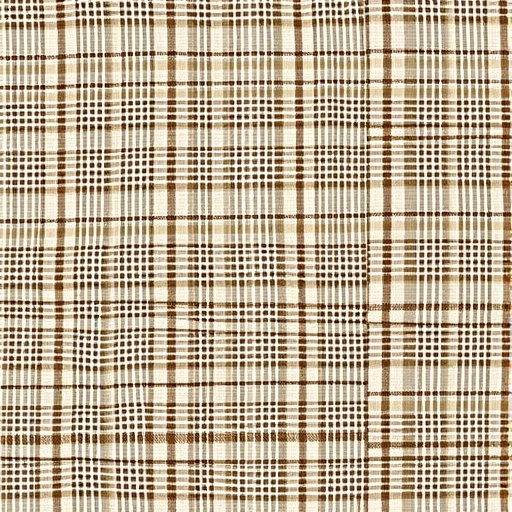Recent innovations in the world of materials science have brought jute fiber-reinforced composites into the spotlight due to their significant potential in structural applications. As the urgency for sustainable materials escalates, researchers are tirelessly pursuing advancements in the use of jute fibers, a natural resource known for its sustainability and strength. These developments mark a pivotal point in the quest for eco-friendly building materials which could redefine industry standards and practices.
The jute plant, known for its high cellulose content, has made its way into various applications, but its use in composite materials is revolutionizing how we perceive natural fibers in construction. By enhancing the integration of jute fibers within composite matrices, researchers are unlocking a realm of possibilities. These modifications not only augment the mechanical properties of the composites but also improve their environmental impact, making them an attractive alternative to traditional synthetic fibers.
Recent studies have explored various methodologies to modify the surface properties of jute fibers. One significant focus has been chemical treatments which enhance adhesion between the fiber and matrix materials. For instance, alkali treatment is a popular method employed extensively to expose the cellulose fibers within jute, subsequently elevating their load-bearing capacity. Such treatments can lead to impressive improvements in tensile strength and modulus, key indicators of a composite’s performance.
Moreover, the linkage of different components within the composite structure can significantly influence the overall performance. The incorporation of additives, such as nanoparticles and fillers, alongside jute fibers has shown promise in mitigating brittleness and enhancing durability. Researchers have been experimenting with various combinations to fine-tune the properties of jute fiber composites to meet stringent engineering requirements while ensuring sustainability remains at the forefront.
The mechanical performance of jute-reinforced composites hinges on understanding the interplay between fiber orientation, fiber length, and matrix formulation. Precise control over these parameters allows engineers to design composites with tailored properties suitable for specific applications. This remarkable flexibility expands potential usage in sectors ranging from automotive to construction, exemplifying jute’s versatility in modern applications.
In addition to mechanical enhancements, the thermal stability of jute fiber-reinforced composites is another facet being explored in research settings. Understanding how these natural composites behave under heat can unlock further applications, especially in environments subjected to elevated temperatures. The exploration of fire-retardant treatments is also critical, envisioning jute composites as reliable materials in building contexts where fire safety is paramount.
As industries continue to embrace greener alternatives, the economic viability of producing jute fiber composites has garnered significant attention. Jute is considered a low-cost plant, making it an attractive candidate compared to synthetic fibers. As production technologies evolve and scale up, the affordability of jute composites is expected to compete fiercely with synthetic alternatives, further driving their adoption in various sectors.
Environmental implications also warrant attention in the dialogue surrounding jute-based composites. Their biodegradability positions them advantageously in a world grappling with plastic pollution and waste management. As countries and corporations shift towards sustainability goals, introducing jute fiber composites into mainstream applications could substantially reduce environmental footprints associated with construction and manufacturing.
Global collaborations in research and innovation are essential for propelling the field forward. Multinational partnerships have emerged, pooling resources and knowledge, creating extensive networks dedicated to the development of jute composites. This collaborative spirit not only accelerates advancements but also ensures that knowledge is disseminated, allowing for innovations to be shared across borders and industries.
Despite the significant progress achieved, challenges lie ahead in the journey toward the widespread commercialization of jute fiber composites. Standardization of material properties, processing techniques, and performance criteria is vital to instill confidence in potential users and investors. Establishing these benchmarks requires a concerted effort from researchers, policymakers, and industry leaders.
A pivotal role in this transition lies with education and awareness. Academia serves as the cradle for spawning innovative ideas and training the next generation of engineers and scientists passionate about sustainable materials. By engaging with students and industry professionals, knowledge dissemination and inspiration can catalyze further investigations into jute and other natural fibers.
Future applications of jute composites are expected to take thrilling turns as potential research opens up. The fusion of jute fibers with cutting-edge technologies such as 3D printing signifies only the beginning of their versatility. Envisioning smart materials that can adapt to environmental changes is an exciting frontier that awaits exploration, promising to further enhance the functionality of jute composites in real-world applications.
Delving into the future, one can anticipate a growing alliance between jute composite solutions and the construction industry’s sustainability goals. As architectural designs morph and materials demands change, jute fiber-reinforced composites underscore the balance between innovation and ecological responsibility. Positioning these materials at the forefront of sustainable design practices can lay a foundational path toward a greener future in structural applications.
As we stand on the brink of this new era of material science, it becomes increasingly evident that the key to unlocking the true potential of jute reinforcement in composites lies not just in the fibers themselves, but in our collective approach to harnessing their capabilities sustainably and responsibly. The future of jute fiber-reinforced composites is not just bright; it embodies the essence of innovation tailored for a sustainable tomorrow.
Subject of Research: Jute fiber-reinforced composites for structural applications.
Article Title: Recent developments in the modification and fabrication of jute fibre-reinforced composites for structural applications.
Article References:
Habib, A., Islam, M.A., Hossain, M.T. et al. Recent developments in the modification and fabrication of jute fibre-reinforced composites for structural applications. Discov Sustain 6, 1107 (2025). https://doi.org/10.1007/s43621-025-01785-7
Image Credits: AI Generated
DOI: 10.1007/s43621-025-01785-7
Keywords: Jute fiber, reinforced composites, structural applications, sustainability, mechanical properties, natural fibers.




